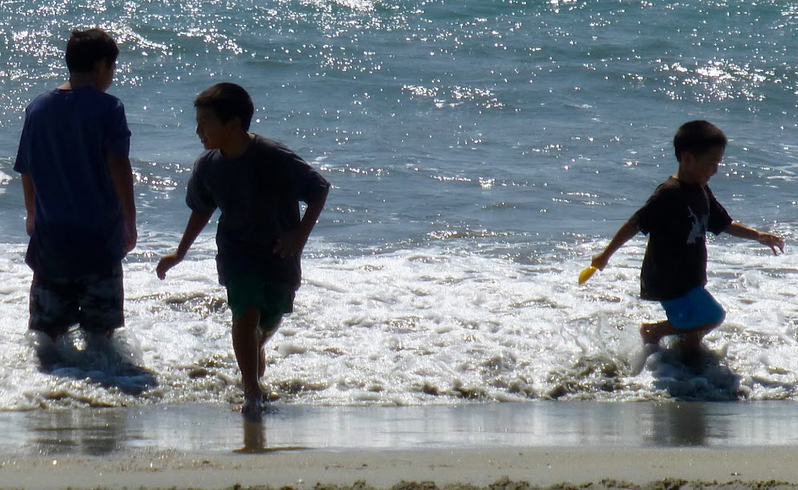This is a guest post by Kiva lender Christeil Figueroa Gota, a mother of four boys in California who practices "unschooling," a home teaching method that emphasizes learning through natural life experiences -- including Kiva.

Three of Christeil's sons playing in the waves.
People are always talking about bringing education to life, literally, by living their lives and letting their children learn the ins and outs of living in our modern world. Home educators and unschoolers are experts at this.
Those in the conventional education world are sometimes incredulous that simply living one's life is enough of an education for children. So, I thought I'd take some time to illustrate our paradigm with just one example -- lending on Kiva.
My husband and I first got involved with Kiva in 2006. We started with $100 to lend and have added more money to our account each year. Every Christmas, my kids receive a certain amount of money through gifts. And by watching our example, the kids have chosen to lend some of their own gift money on Kiva.
We sit with each child and choose the borrowers that they would like to lend to. They also follow their borrower's progress periodically throughout the life of the loan. Lending is a cornerstone of the world's economy, and our children now have a firm understanding of the consumption economy from being micro-lenders on Kiva.
Last May, our 10-year-old son chose a borrower named Esther from Sudan. Esther needed a microloan to stock her general store. My son contributed $25 of his money, and -- along with other Kiva lenders -- helped raise the $425 that Esther needed.
We tracked Esther's progress online as she repaid her loan in increments of $25 per month. However, this past October, Esther missed her last scheduled payment and is now delinquent on the Kiva website.
Seeing this, my son became curious about the economic climate of Sudan to see if he could determine why Esther is late on her payment. This led us to discover the awesome, albeit tragic history of Sudan. At the tender age of 10, my son not only grasps the complexities of micro-financing and world economics, but has now also gained an appreciation for the struggles of families in Southern Sudan, the plight of refugee children and how he has a direct impact on the life of one Sudanese woman trying to rebuild after war.
This month, my son is interested in lending to people with businesses in Jordan and Palestine. Shariah Law (Islamic Law) prohibits the charging of interest or fees when lending, so we are now also exploring the Islamic banking system -- a subject that is increasingly relevant, yet hardly covered in formal higher education, let alone elementary school.
My children love being Kiva lenders because it's something they can do to make a difference. Of course they do spend some of their Christmas money on video games and toys, but I can honestly say that lending on Kiva gives them no less pleasure.
Have questions? Ideas for other ways to support Kiva borrowers? Send them our way at blog@kiva.org.
This post originally ran on The Innovative Educator. Thanks to them for letting us republish Christeil's amazing story!
PREVIOUS ARTICLE
Featured Volunteer: Sherry Bess finds inspiration in translating for Kiva borrowers →NEXT ARTICLE
Elusive Cash Cows and Bread Baskets: Challenges Facing Bolivian Farmers Today →














